Lolong and Me
Spending time with Lolong
Lolong is large and I am small…
Modest beginnings
The Spirit of Lolong
Click here to see a video filmed by Kate Mohr in 2015: https://www.youtube.com/watch?v=WpbUYOphAvQ
Lolong was a huge saltwater crocodile that was captured in the Philippines in September 2011. He was suspected in two human and numerous water buffalo deaths around the small villages that lay in his territory. When he was captured, he measured 20 feet, 3 inches, and weighed 2,370 pounds. This made him the longest saltwater crocodile in captivity. It was estimated that he was over 50 years old.
The villagers had prepared a large holding area with a pond for him and put him on display. Several animal rights activist groups had strong objections to his being kept in captivity, arguing that his holding pen did not meet humane standards, and that he should be returned to his natural environment. He died approximately eighteen months after being captured. An expert herpetologist performed a necropsy and determined that Lolong died of congestive heart failure and pneumonia, compounded by a weakened immune system brought on by chronic stress. The necropsy revealed a great deal of internal bruising and hemorrhage. Another expert’s theory was that in the wild, Lolong never left the water and that the water safely supported his massive bulk. On display, his concrete-lined pond was drained daily, leaving him without the water he needed. This was ostensibly done to keep his pond clean, but the herpetologist felt that the water was drained so that Lolong could be viewed clearly by the many visitors who paid to see him. Over time, this practice damaged Lolong’s internal organs, and this stress contributed to his death.
This story affected me deeply, and caused me to ponder, as I often do, the relationship and rights of non-human persons and human persons when they overlap. Crocodiles are apex predators, and Lolong included large prey such as water buffaloes and humans in his diet. He was behaving according to his nature. The villagers used the waterways to obtain water, to fish, and to travel. They did not have the choice to avoid the waterway, and therefore keep themselves safe from interacting with Lolong. Their desire to capture him and to generate much-needed income for the village by putting him on display is completely understandable. Although I see both sides of the situation clearly, and I do not know what the best ‘answer’ to this dilemma might have been, I do feel that, for me, Lolong is a symbol of the gradual disappearance and destruction of the natural world.
I have commemorated Lolong’s long life and his death by building a life-size replica of him. The crocodile is built using an internal frame of hardware cloth and chicken wire, with a papier-mache surface. The crocodile is painted white to represent his spirit state. In the installation of this sculpture, Lolong is accompanied by hundreds of small clay creatures called ‘four-leggers.’ These four leggers are of two varieties: one type has a small hole in the top of its head in which a stem of rosemary is placed. The second type has a deeper ‘cup’ for the top of its head, large enough to hold a votive candle. These small creatures serve as vessels of remembrance and that they are also guiding Lolong’s spirit to its next destination.
I added sound to the installation by having a soundtrack loop developed that incorporated the bellowing and hissing of a male crocodile. I also added the chirping of baby crocodiles to represent the beginning and end of Lolong’s life. I covered one wall of the gallery with posters about the ecology of the Philippines, information about the capture of Lolong, and information, pictures, and illustrations about saltwater crocodiles in general. Visitors to the gallery had the opportunity to make drawings of Lolong or other crocodiles, alligators, etc. (I got one drawing of a hermit crab!) and pin them to one of the walls. Children and adults both enjoyed this. Visitors were also allowed to (carefully) touch Lolong to feel the textures of the scutes.
Finally, I showed a series of drawings I made while I was sculpting Lolong. The drawings are called, ‘crocodoodles,’ and are purely fantastical crocodile imaginings.
I have been fascinated by crocodiles ever since I was young and this project is the culmination of my obsession and deep love for these very special inhabitants of the earth.
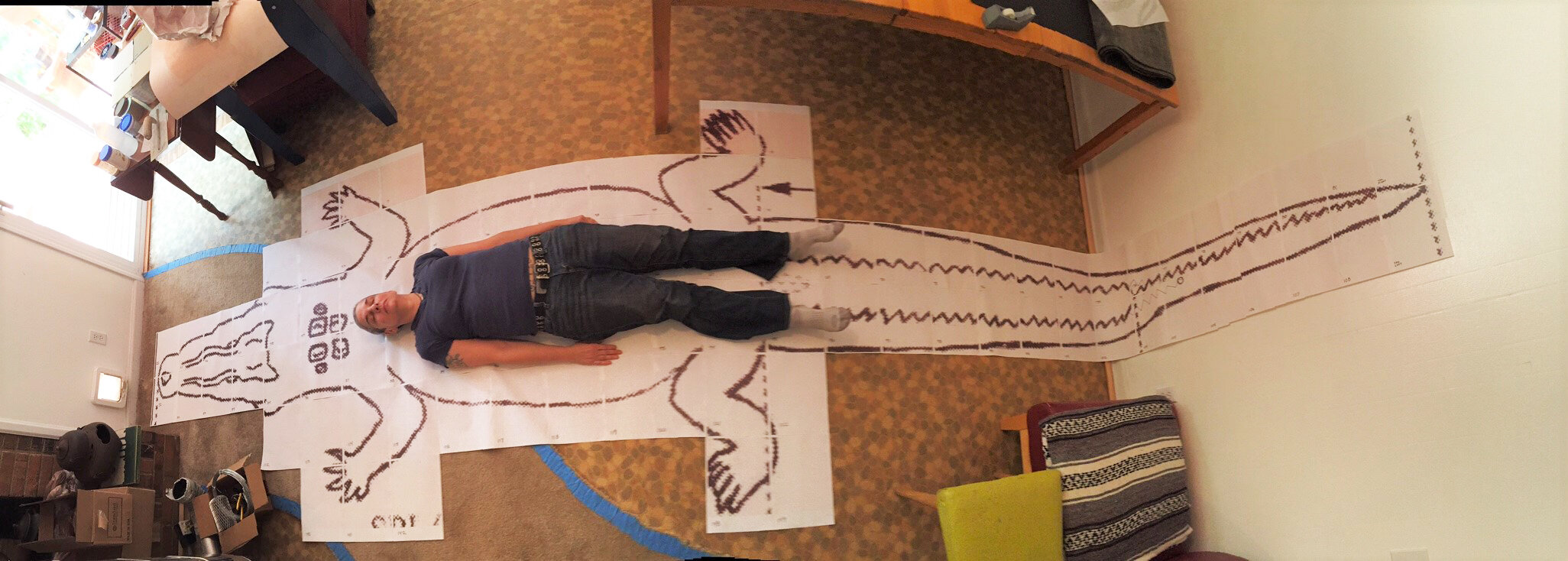
Beginning - measuring Lolong
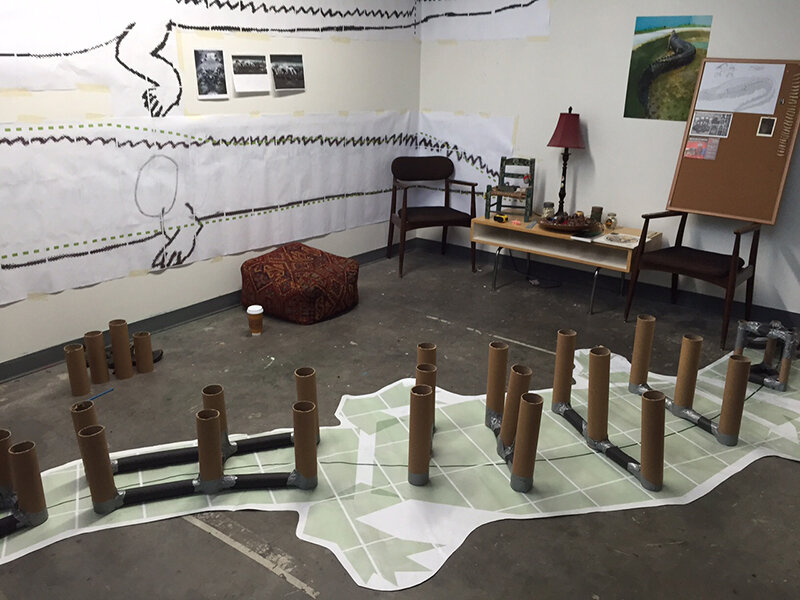
First steps in studio 1

First steps in studio 2
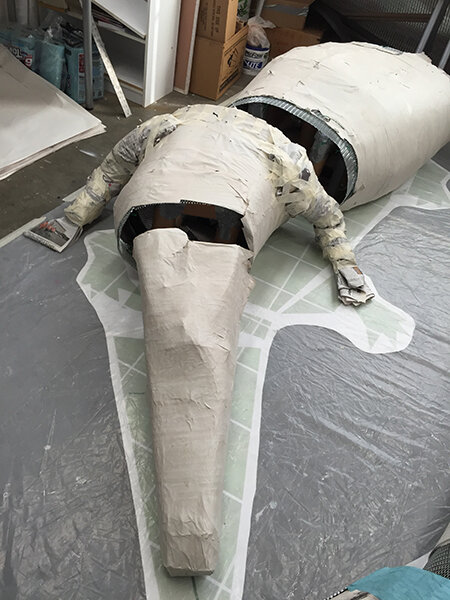
Hardware cloth, newsprint
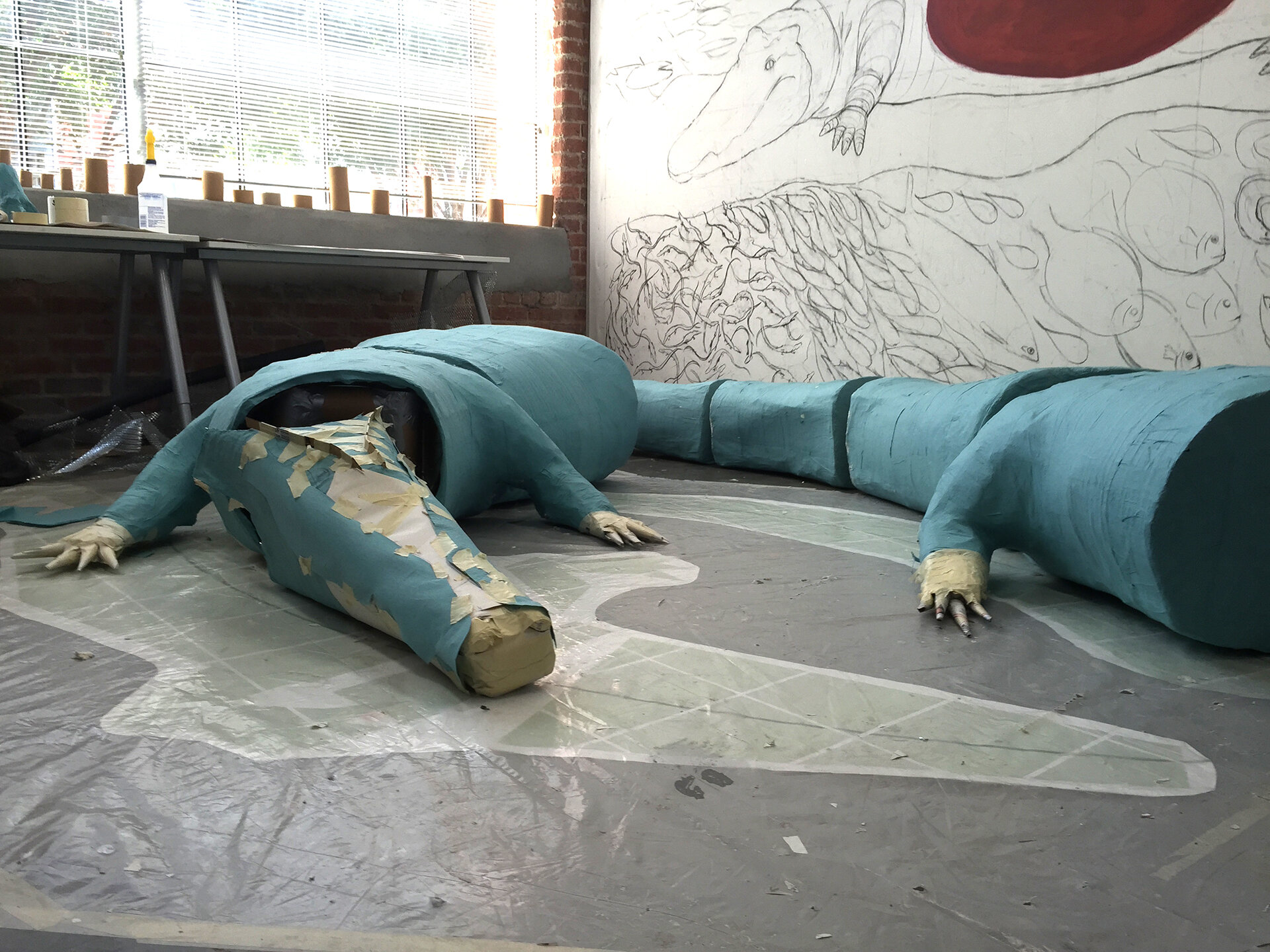
Adding the blue shop towels for strength

Lolong in 7 parts, papier mache added
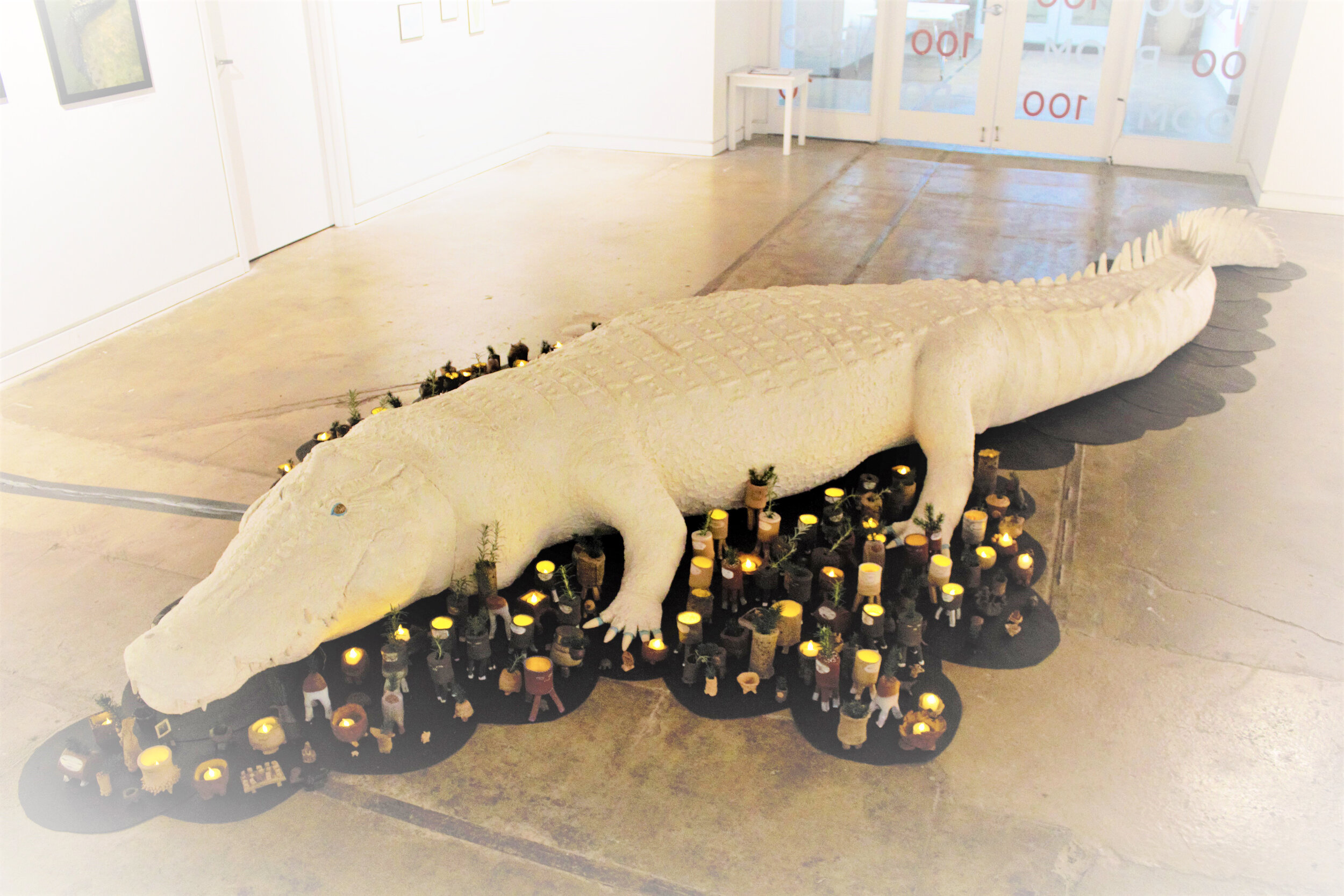
Lolong surrounded by four-leggers
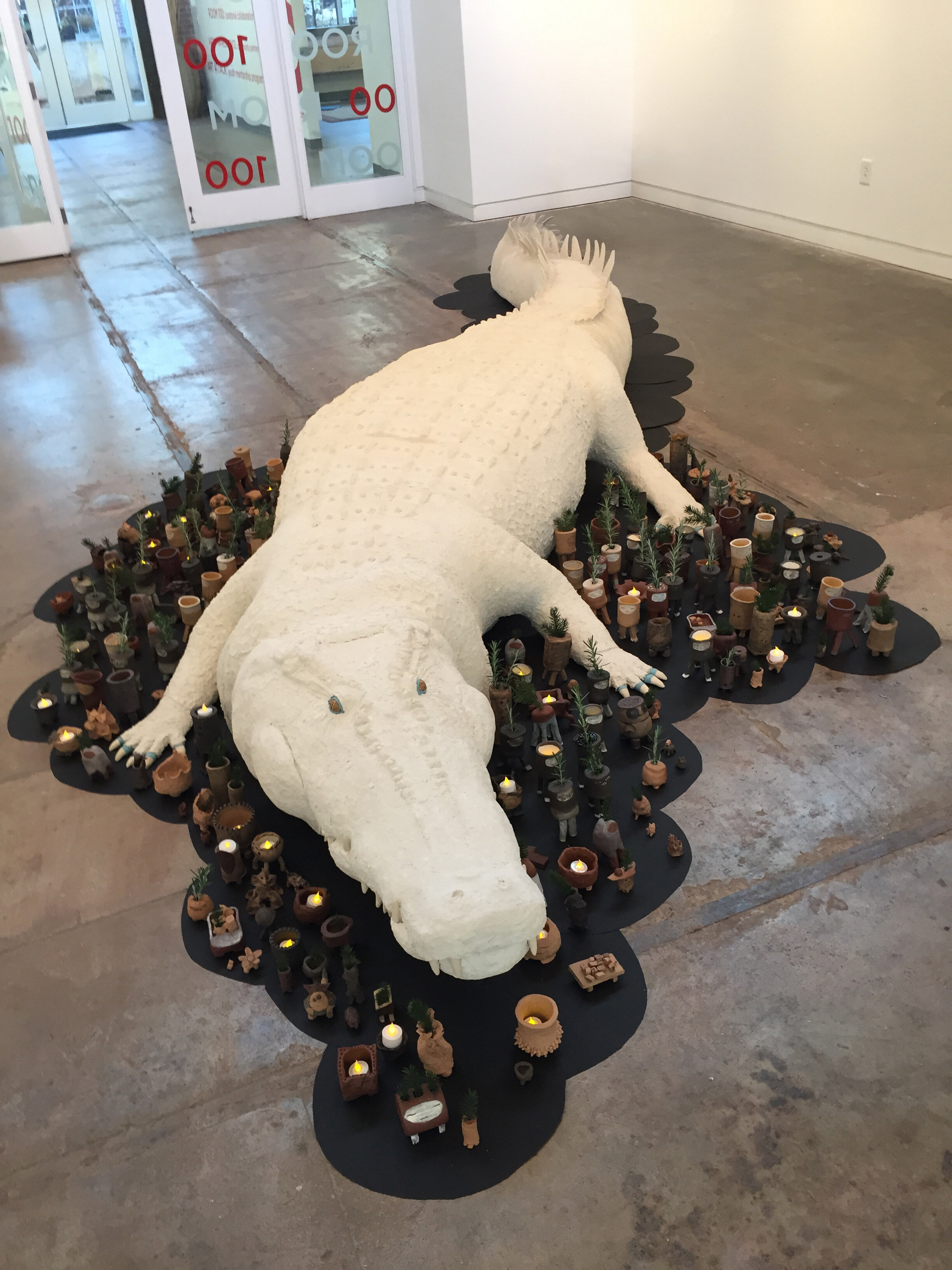
Lolong full installation shot-front

Lolong -installation view - back

Lolong and four-leggers-head shot 1

Lolong and four-leggers-head shot 2

Made with Squarespace
